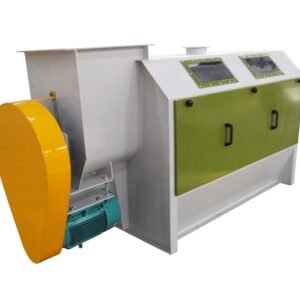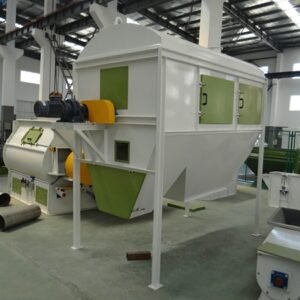Description
Technical Specifications & Magnetic Performance
Magnetic Circuit Engineering
-
Magnetic Materials: Ferrite (ceramic), Neodymium (rare earth), or Alnico configurations
-
Magnetic Strength: 2,500-12,500 gauss surface strength depending on application
-
Field Depth: Effective capture through material depths of 0.5-2.0 inches
-
Temperature Tolerance: Standard grades to 350°F (177°C), high-temp versions to 750°F (399°C)
Construction & Physical Specifications
-
Tube Diameter: 0.75-4.0 inches standard, with custom sizes available
-
Tube Length: 6-96 inches to match specific chute or housing dimensions
-
Housing Materials: 304/316 stainless steel, food-grade plastics, or specialized coatings
-
Connection Types: Threaded ends, flanged connections, or quick-disconnect fittings
Performance Ratings & Application Matching
-
Capture Efficiency: 99.5-99.9% on ferrous particles >100 microns in size
-
Flow Rate Compatibility: Optimized for materials moving at 50-500 feet/minute
-
Temperature Stability: Minimal strength loss across operational temperature ranges
-
Chemical Resistance: Compatible with acidic/alkaline materials and cleaning solutions
Industry Applications & Configuration Selection
| Industry Sector | Recommended Magnetic Strength | Typical Tube Diameter | Special Features | Capture Efficiency |
|---|---|---|---|---|
| Food & Spices | 8,000-10,000 gauss | 1-2 inches | USDA/FDA acceptance, CIP capability | 99.8% @ 150 microns |
| Pharmaceutical | 10,000-12,500 gauss | 0.75-1.5 inches | High-purity finishes, validation packages | 99.9% @ 100 microns |
| Plastics & Polymers | 6,000-9,000 gauss | 2-3 inches | Abrasion-resistant coatings, easy-clean | 99.7% @ 200 microns |
| Chemicals & Powder | 7,000-11,000 gauss | 1.5-2.5 inches | Corrosion resistance, explosion-proof | 99.6% @ 120 microns |
| Grain & Milling | 4,000-7,000 gauss | 2-4 inches | Heavy-duty construction, high capacity | 99.5% @ 250 microns |
Application-Specific Engineering Considerations:
-
Food Grade Applications: 316 stainless construction, radiused corners, USDA-accepted finishes
-
Hazardous Environments: Explosion-proof ratings, static-dissipative features
-
High-Purity Requirements: Electropolished surfaces, minimal particle traps
-
Abrasive Materials: Tungsten carbide coatings, replaceable wear sleeves
Installation Configurations & System Integration
Gravity-Feed Applications
-
Vertical Spouts: Single or multiple tubes in parallel for high-flow situations
-
Inclined Chutes: Angled installations maximizing material contact time
-
Transition Points: Positioned where material flow changes direction or velocity
Powered Conveyor Systems
-
Vibratory Feeders: Tubes mounted at discharge points to screen conveyed materials
-
Screw Conveyors: In-line installations within conveyor housings
-
Pneumatic Lines: Specialized high-pressure designs for air-conveyed materials
Custom Housing Solutions
-
Drawer-Type Housings: Quick removal for cleaning without process interruption
-
In-Line Housings: Flanged connections for pressurized systems
-
Grid Configurations: Multiple tubes in array patterns for high-volume applications
Operational Performance & Economic Impact
Contamination Capture Data
-
Food Processing: Typical capture of 5-25 grams of ferrous material per 8-hour shift
-
Pharmaceutical: Detection and removal of stainless steel fragments from wear parts
-
Plastics Recycling: Removal of ferrous contaminants from post-consumer materials
-
Grain Milling: Capture of harvesting and processing equipment wear particles
Economic Justification & ROI
-
Equipment Protection: Prevents damage to grinders, extruders, and packaging equipment
-
Product Quality: Eliminates contamination-related rejects and customer returns
-
Regulatory Compliance: Meets HACCP, FDA, and other quality system requirements
-
Maintenance Reduction: Decreases downtime for equipment cleaning and repair
Cost-Benefit Analysis Example:
A food processing plant investing $3,500 in tubular magnet protection for their spice line prevented an estimated $28,000 in equipment damage and $15,000 in product recalls in the first year alone, achieving full ROI in under 3 months.
Maintenance Protocols & Performance Validation
Cleaning Procedures & Schedules
-
Manual Cleaning: Simple wiping for light contamination in accessible locations
-
Dedicated Cleaning Stations: Purpose-built areas for thorough magnet cleaning
-
Automated Systems: Self-cleaning designs for continuous operation applications
-
Documentation Requirements: Cleaning logs supporting quality audits
Performance Verification Methods
-
Gauss Meter Testing: Regular verification of magnetic strength
-
Test Kit Validation: Use of standardized ferrous particles to verify capture efficiency
-
Visual Inspection: Checking for physical damage or coating wear
-
Third-Party Certification: Independent verification for quality-critical applications
Preventive Maintenance Schedule
-
Daily: Visual inspection for damage and buildup
-
Weekly: Strength verification and thorough cleaning
-
Monthly: Complete inspection and performance testing
-
Annually: Comprehensive review and recalibration if needed
Expert Q&A for Processing Engineers
Q1: How do we determine the appropriate magnetic strength for our application?
A: Consider material density (heavier materials require stronger magnets), particle size (smaller particles need higher gauss ratings), flow rate (faster flows demand stronger capture forces), and temperature (high temperatures can degrade magnetic performance). Most applications benefit from 7,000-9,000 gauss, with rare earth magnets recommended for fine particles under 150 microns.
Q2: What is the proper installation spacing for multiple tubular magnets?
A: Optimal spacing is typically 1-1.5 times the tube diameter. For 2-inch tubes, space centers 2-3 inches apart. This ensures complete magnetic coverage without creating flow restrictions. For high-volume applications, consider staggered configurations that create overlapping magnetic fields.
Q3: How often should tubular magnets be replaced?
A: Magnetic strength typically degrades 1-2% annually under normal conditions. Most magnets maintain functional strength for 8-12 years. Replacement should be considered when strength drops below 80% of original rating or when physical damage compromises performance. Regular gauss meter testing provides the data for replacement decisions.
Q4: Can tubular magnets capture work-hardened or non-magnetic stainless steel?
A: Standard magnets cannot capture non-magnetic stainless steels (300-series). However, work-hardened stainless may develop slight magnetic properties in damaged areas. For comprehensive protection against all metals, consider combining magnetic separation with metal detection systems for complete contamination control.
Q5: What are the cleaning best practices for different material types?
A: For dry materials, use dedicated wiping stations with plastic scrapers. For sticky products, food-grade release agents facilitate cleaning. In wet applications, immediate cleaning prevents corrosion. Always use non-magnetic tools to avoid damaging the magnet surface, and document all cleaning for quality audits.






Reviews
There are no reviews yet.